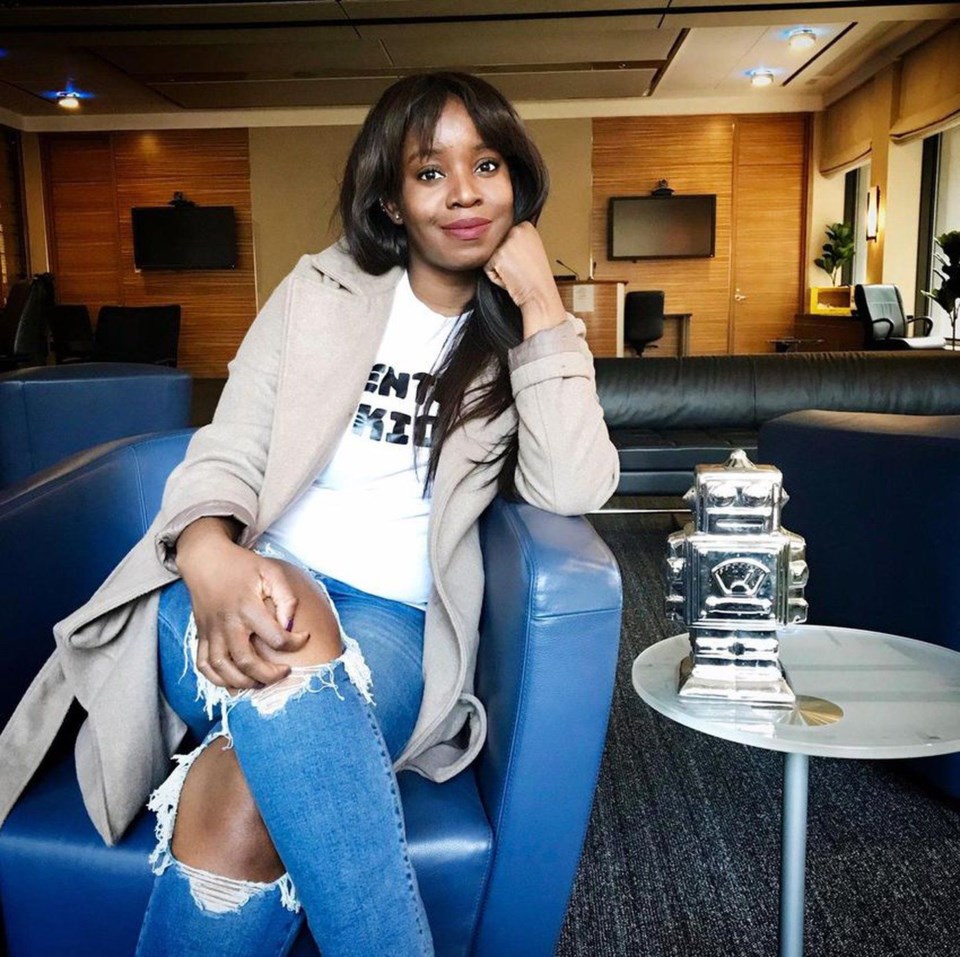If you look at the top most visited sites on the web, you’ll find social media, porn and Wikipedia. (Google, too, but that goes without saying.)
Wikipedia pages about famous figures, events in history, and even fictional dogs like Lassie often appear high in Google searches. And it’s easy for internet users to fall down a rabbit hole of pages.
But while there is even a page dedicated to which direction to hang a roll of toilet paper, the gender and race gap on the site is stark, and long documented.
Takara Small, a Toronto-based tech columnist, said she can think of plenty of accomplished Canadians in her industry who are absent from the site.
So, Small decided this could be a project for the non-profit she founded, VentureKids Canada, which teaches underserved youth business and coding skills.
In late March, she challenged students and members of the community to become Wikipedia editors and together create or edit one Wikipedia page per month for the next year for a different Canadian in tech who is also a woman or person of colour.
The group started with Vanessa Craft, a senior executive at TikTok Canada and the former editor-in-chief of Elle Canada, who didn’t have a Wikipedia page.
“It shouldn’t be a surprise to people that BIPOC (Black, Indigenous and people of colour communities) are under-represented on online platforms,” Small said. “If it happens ... in the physical world, why would it not happen in the online world?”
For Small, creating more visibility on one of the most popular online encyclopedias is another layer of representation that can encourage young marginalized Canadians to find a place in the tech world.
“There is something to be said about, you know, seeing it to be it,” she said.
VentureKids isn’t alone. “Edit-a-thons” have been organized by a number of interest groups around the world — the groups Black in Physics, 500 Women Scientists, Art + Feminism, for example — to create and edit entries for people who are overlooked.
The most recent 2020 survey by Wikimedia — the site’s parent organization — found that 87 per cent of its editors are men. The survey did not ask about race, but almost half live in Europe and one fifth in North America.
Sarah Severson, a librarian at the University of Alberta and a member of the board for Wikimedia Foundation, said that the lack of diversity trickles to the content on the site, because it’s volunteer-based, so editors will work on pages that they are interested in.
“You see really long articles on Dungeons and Dragons characters, and you see an independent female artist having a small article,” Severson said.
“You don’t know what’s missing unless you have diversity within the editor forces,” she continued. “When you have an editorial community that’s all North American white men, they’re just going to see different things.”
And then within the Wikipedia community, editors can challenge content they see, if they don’t think it’s notable.
Although Wikipedia readers are often warned to proceed with caution, because it can seemingly be edited by anyone, Severson said, “that doesn’t stop us from using it” as even a starting point.
And regardless, its influence is huge.
Severson says it’s partly because it has an open creative commons licence — so copyrighting isn’t an issue — and because the way its data is structured makes it easy to be picked up around the web.
And so, “if you have information gaps in Wikipedia ... it echoes across the internet,” she said.
But the gaps begin before Wikipedia as well. Entries must reference secondary sources — books, articles and analysis by someone removed from the topic — as opposed to primary sources like interviews or the person themselves. So the less media we have about people from a diversity of backgrounds, the less there is on Wikipedia and the internet in general, Severson said.
Amber Berson agreed and also said there’s a case for changing some of these requirements all together.
Berson is an art historian and co-lead at Art + Feminism, a group that has worked to close the information gap around gender, art and the internet.
She noted that relying on secondary sources doesn’t make the site accessible to cultures that rely on oral storytelling, like African, Asian and Indigenous cultures. Other things like little known magazines from around the world or collections can be challenged by existing editors.
“Therefore, everything from those communities gets systematically excluded,” Berson said. “The ways in which Wikipedia has been set up, reflects a very Anglo-Saxon idea of what is proper.”
The problem the art world is running into is publishing in Canada is shrinking, so they too are losing options for sources, Berson said.
“If we cannot include those sources then what can be included? Does that mean that arts in Canada does not exist anymore?” Berson said.
Last year, Wikimedia launched its 2030 plan to improve the site including the user experience and equity in leadership among other things.
Berson is looking forward to how the platform can evolve, keeping in mind that it could be the difference between parity on the internet and being “completely erased.”
Angelyn Francis is a federally funded Local Journalism Initiative reporter at theToronto Star



